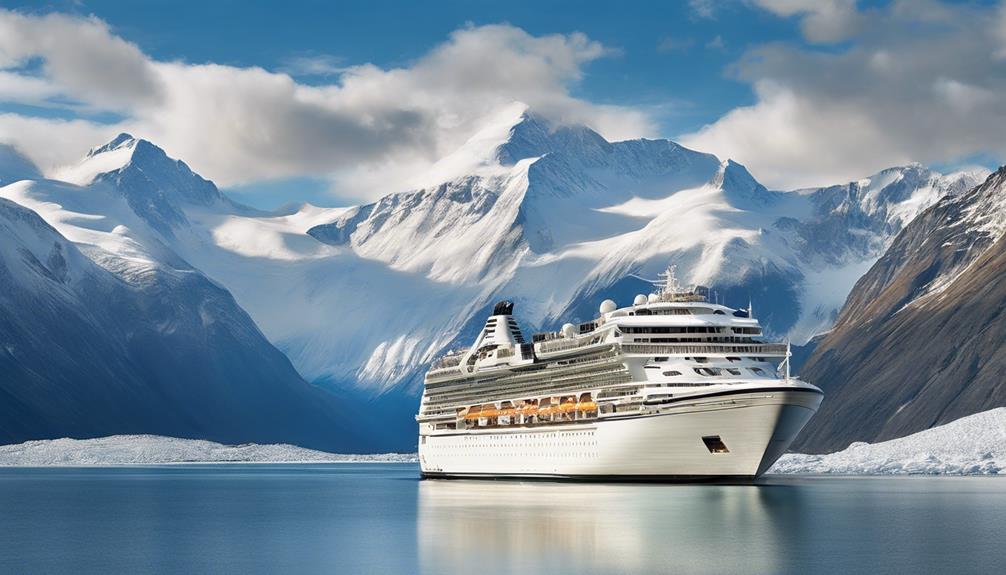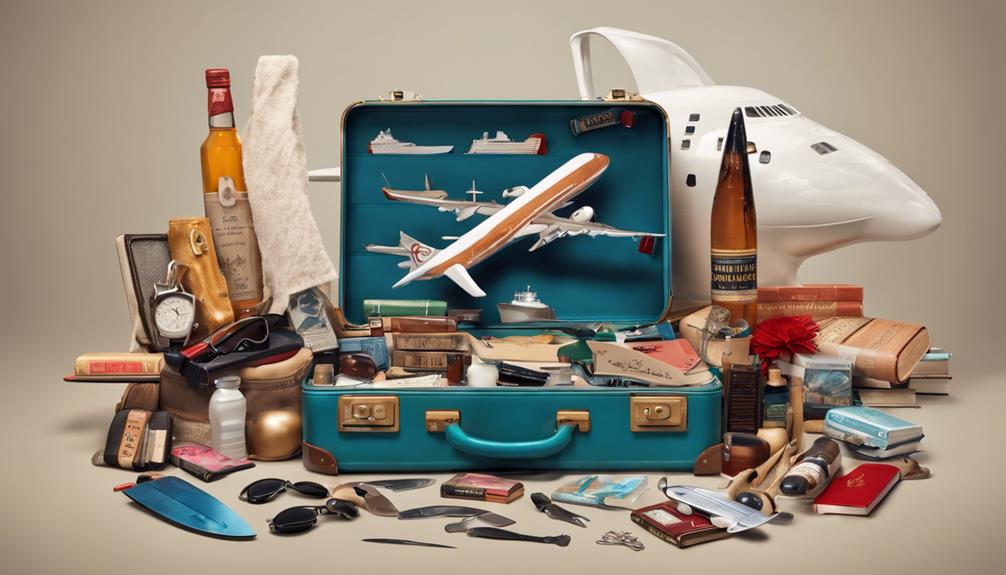Beginners Guides
Condensation on Ductwork Between Floors

So, we've all experienced that moment when we notice something dripping from the ceiling and immediately start wondering what could be causing it.
Well, one of the potential culprits could be condensation on the ductwork between floors. It's a common issue that can lead to a range of problems, but understanding the causes and implications is the first step in addressing it.
But what exactly causes condensation on ductwork, and what impact does it have on the efficiency of our HVAC systems?
Stick around to find out.
Key Takeaways
- Effective insulation measures prevent condensation between floors.
- Managing humidity levels reduces the likelihood of condensation.
- Regular maintenance of ductwork ensures insulation effectiveness.
- Monitoring and controlling humidity levels are essential in prevention.
Understanding Condensation on Ductwork
We have observed that condensation on ductwork occurs when warm, humid air comes into contact with the cooler surface of the duct, leading to moisture accumulation. Understanding the factors contributing to this phenomenon is crucial for implementing effective solutions.
Insulation solutions play a vital role in preventing condensation on ductwork. Properly insulated ducts help maintain the temperature of the air inside, reducing the likelihood of condensation forming on the exterior surface. It's essential to consider the insulation material's thermal resistance, its ability to prevent heat transfer, and its compatibility with the duct material.
Humidity control is another key aspect to address when dealing with condensation on ductwork. Managing indoor humidity levels through ventilation and dehumidification systems can significantly mitigate the risk of condensation.
Additionally, controlling the temperature differentials between the duct surface and the surrounding air is essential. This can be achieved through the use of thermal barriers and reflective insulation, which reduce heat transfer and minimize the potential for condensation.
Causes of Ductwork Condensation

After understanding the impact of insulation and humidity control on ductwork condensation, it is imperative to analyze the specific factors that contribute to this phenomenon. Two critical factors that directly influence ductwork condensation are insulation techniques and temperature regulation.
| Factors | Description |
|---|---|
| Insulation Techniques | The quality and placement of insulation play a significant role in preventing condensation. Proper insulation ensures that the temperature of the ductwork remains consistent, reducing the likelihood of condensation forming. |
| Temperature Regulation | Effective temperature regulation within the ductwork system is crucial in preventing condensation. Proper HVAC system operation, including maintaining the recommended temperature levels, prevents the formation of moisture on the duct surfaces. |
Insufficient insulation or poorly installed insulation can lead to temperature differentials, causing condensation to form on the ductwork. Additionally, inadequate temperature regulation within the ductwork can result in moisture buildup. By understanding these factors and implementing appropriate insulation techniques and temperature regulation, the risk of ductwork condensation can be significantly minimized.
Impact on HVAC System Efficiency
Assessing the impact of ductwork condensation on HVAC system efficiency requires a comprehensive understanding of how moisture accumulation can hinder the optimal operation of the system.
- Energy Consumption: Condensation on ductwork can reduce the thermal efficiency of the system, leading to increased energy consumption as the HVAC system compensates for the loss of thermal energy. This can result in higher utility costs and unnecessary strain on the system.
- Insulation: Excessive condensation can compromise the insulation properties of the ductwork, diminishing its ability to maintain the desired temperature levels. This can lead to uneven heating or cooling throughout the building and reduced overall system efficiency.
- Air Quality: Moisture buildup within the ductwork provides an environment conducive to mold and mildew growth. This can compromise indoor air quality, posing potential health risks to occupants. Additionally, the presence of excess moisture can lead to the deterioration of the ductwork material, further impacting air quality.
- Moisture Control: Efficient HVAC system operation requires effective moisture control. Condensation on ductwork can disrupt this balance, leading to inefficiencies in humidity control and overall system performance. Proper management of moisture levels is essential for maintaining optimal HVAC efficiency and indoor air quality.
Preventing Condensation Between Floors

To prevent condensation between floors, it's essential to implement effective insulation measures and maintain proper ventilation within the building structure. Insulating ductwork plays a crucial role in preventing condensation. Properly insulated ducts help in maintaining the temperature of the air inside, reducing the potential for condensation to occur. It's important to ensure that the insulation is intact and free from any damage to maximize its effectiveness.
Managing humidity levels is equally vital in preventing condensation between floors. Monitoring and controlling the humidity levels within the building can significantly reduce the likelihood of condensation forming on ductwork. This can be achieved through the use of dehumidifiers, ventilation systems, and air conditioning units that are designed to regulate and maintain optimal humidity levels.
In addition to insulation and humidity control, regular maintenance of ductwork is essential. Any signs of wear or damage to the insulation should be promptly addressed to prevent condensation issues. By implementing these measures, the risk of condensation between floors can be minimized, ensuring the optimal performance and longevity of the HVAC system.
Addressing Condensation Issues
Addressing condensation issues requires a comprehensive inspection of the ductwork to identify any areas of concern and implement targeted solutions for optimal performance. Here are some key steps to address condensation issues:
- Insulating ductwork: Proper insulation is essential to prevent temperature differentials between the ductwork and surrounding air, which can lead to condensation. Insulating ductwork helps maintain consistent temperatures and reduces the likelihood of condensation forming on the surface.
- Humidity control: Implementing effective humidity control measures within the building can significantly mitigate condensation on ductwork. Controlling indoor humidity levels through the use of dehumidifiers or ventilation systems helps to minimize the moisture content in the air, thereby reducing the potential for condensation.
- Sealing air leaks: Identifying and sealing any air leaks in the ductwork is crucial for preventing condensation. Leaks can introduce warm, moist air into the duct system, leading to condensation when it comes into contact with cooler surfaces. Proper sealing helps maintain the integrity of the ductwork and prevents moisture infiltration.
- Routine maintenance: Regular inspections and maintenance of the HVAC system and ductwork are essential for identifying and addressing potential condensation issues. This includes checking for any signs of moisture accumulation, ensuring proper insulation, and addressing any factors contributing to high humidity levels within the building.
Frequently Asked Questions
Can Condensation on Ductwork Between Floors Lead to Mold Growth in the Building?
Condensation on ductwork between floors can lead to mold growth in the building. To prevent this, proper insulation techniques are crucial.
By addressing the condensation issue, we can effectively deter mold growth. Regular maintenance and inspections of the ductwork can identify and rectify any condensation problems, ultimately preventing mold from developing.
It's essential to address these issues proactively to maintain a healthy indoor environment.
Are There Any Health Risks Associated With Condensation on Ductwork Between Floors?
Condensation on ductwork between floors can pose health implications if not addressed. Mold and mildew thrive in damp environments, leading to respiratory issues and allergies.
Prevention involves insulating ductwork to minimize temperature differentials and controlling indoor humidity levels. Structural damage can also occur, with potential for deterioration and corrosion of the ducts.
Regular inspection and maintenance are crucial for early detection and remediation. It's essential to address these issues promptly to safeguard both health and infrastructure.
How Can I Tell if Condensation on My Ductwork Between Floors Is Causing Damage to the Building Structure?
We can determine if condensation on ductwork between floors is causing structural damage by inspecting for signs such as:
- Water stains
- Mold growth
- Weakened building materials
Condensation damage can compromise the structural integrity, leading to issues like:
- Rot
- Corrosion
- Deterioration of insulation
Regular inspections and addressing any condensation issues promptly are essential to maintain the building's structural integrity and prevent further damage.
Are There Any Specific Building Codes or Regulations Related to Preventing Condensation on Ductwork Between Floors?
Building codes and regulations play a crucial role in preventing condensation on ductwork between floors.
Insulation methods and moisture control techniques are vital for compliance. Proper insulation prevents condensation, and regulations often mandate specific insulation requirements for ductwork.
Moisture control techniques, such as proper ventilation and humidity control, are also essential for maintaining compliance with building codes and regulations related to preventing condensation on ductwork between floors.
What Are Some Long-Term Maintenance Strategies for Preventing Condensation on Ductwork Between Floors?
To maintain ductwork between floors, long-term maintenance includes regular inspections, sealing any leaks, and ensuring proper insulation techniques. These strategies prevent condensation build-up, which can lead to moisture damage and mold growth.
Insulating ducts with proper materials, such as foam or fiberglass, and maintaining consistent temperature and humidity levels in the building are crucial for preventing condensation in the long term.
Regular maintenance and upkeep are essential for optimal performance.
Can Condensation on Ductwork Between Floors Affect the Health of Those Living in the Basement?
Condensation on ductwork can lead to mold and mildew, impacting the living in basement health. The damp environment promotes the growth of allergens and respiratory irritants, causing health issues for those in the basement. It’s important to address and prevent condensation to maintain a healthy living environment.
Conclusion
In conclusion, condensation on ductwork between floors can compromise HVAC system efficiency. Understanding the causes and implementing preventative measures, such as proper insulation and ventilation, is crucial for addressing this issue.
By taking proactive steps to prevent condensation, we can protect our HVAC systems and maintain optimal comfort and air quality in our living or working spaces.
Let's tackle these technical challenges with tenacity and thoughtful tactics to triumph over troublesome condensation.
- About the Author
- Latest Posts
Introducing Ron, the home decor aficionado at ByRetreat, whose passion for creating beautiful and inviting spaces is at the heart of his work. With his deep knowledge of home decor and his innate sense of style, Ron brings a wealth of expertise and a keen eye for detail to the ByRetreat team.
Ron’s love for home decor goes beyond aesthetics; he understands that our surroundings play a significant role in our overall well-being and productivity. With this in mind, Ron is dedicated to transforming remote workspaces into havens of comfort, functionality, and beauty.
Beginners Guides
Best Time of Year to Go on an Alaskan Cruise
When is the best time to embark on an Alaskan cruise? Let's uncover the seasonal secrets that can transform your journey.

When considering the best time of year for an Alaskan cruise, you might not be aware that the season can greatly impact your experience.
From the best moments for wildlife sightings to the chance to witness the elusive Northern Lights, each period offers unique advantages.
Understanding the nuances of timing can truly enhance your Alaskan adventure and make sure you get the most out of your cruise.
Key Takeaways
- Late-May to mid-June: optimal for vibrant wildlife observation during peak salmon runs.
- Mid-June to August: best for comfortable weather, outdoor activities, and Alaskan cruise start.
- Early September: tranquil ambiance with fewer crowds, ideal for serene wildlife encounters.
- Late September: prime time for Northern Lights viewing, offering intense and colorful displays in Alaska.
Ideal Months for Alaskan Wildlife
Late-May to mid-June offers the best opportunity for observing vibrant Alaskan wildlife due to the peak of salmon runs and the presence of mothers with their calves/cubs. This period marks the awakening of wildlife in Alaska, with moose, sheep, mountain goats, and black bears becoming visible as they emerge in search of food and mating opportunities amidst the new vegetation. The cooler temperatures during late May to mid-June create a comfortable environment for wildlife excursions, allowing for longer and more enjoyable wildlife viewing experiences.
Additionally, the reduced number of tourists during this time provides a more intimate and authentic Alaskan wildlife encounter. With more daylight hours available, visitors have ample time to witness the diverse wildlife activities that unfold during these months. The vibrancy of the wildlife scene, coupled with the lush greenery of the new vegetation, sets the stage for an unforgettable Alaskan wildlife adventure that showcases the true beauty and wilderness of this spectacular region.
Optimal Time for Good Weather

As we move into the discussion on the best time for good weather in Alaska, mid-June to August stands out as the recommended period for starting on an Alaskan cruise due to the warm temperatures and extended daylight hours. During this time, temperatures range from 50-70°F, creating pleasant conditions for outdoor activities and wildlife sightings. The long days with up to 22 hours of sunlight provide ample time for cruising and exploring the breathtaking landscapes of Alaska. Common wildlife sightings in mid-summer include brown bears, moose, beluga and humpback whales, orcas, seals, and dolphins. Choosing to cruise in mid-June to August ensures an optimal experience with comfortable weather conditions, perfect for enjoying all that Alaska has to offer.
| Weather | Best |
|---|---|
| Temperature | 50-70°F |
| Daylight Hours | Up to 22 hours |
| Wildlife | Brown bears, moose, belugas, humpbacks, orcas, seals, dolphins |
| Activities | Cruising, exploring, wildlife spotting |
| Experience | Pleasant weather, ideal for outdoor adventures |
Prime Season to Avoid Crowds
To maximize your Alaskan cruise experience with fewer crowds and a peaceful ambiance, consider starting on your journey in early September. This time offers a perfect blend of cooler temperatures, stunning fall foliage, and wildlife spectacles.
Imagine witnessing humpback whales breaching, salmon spawning, and caribou gracefully migrating in tranquil waters, away from the summer crowds. Early September marks a shift period in Alaska, where nature prepares for autumn, creating serene surroundings ideal for an intimate cruise experience.
The reduced tourist congestion during this time allows for a more personal connection with the breathtaking landscapes and wildlife encounters. Picture yourself enjoying the Alaskan wilderness in a quieter setting, appreciating the beauty and majesty of this unique destination without the hustle and bustle of peak season.
Embrace the opportunity for a peaceful and unforgettable journey through Alaska's waters during early September.
Best Time for Northern Lights

For best viewing of the mesmerizing Northern Lights in Alaska, consider planning your trip for late September. This time of year offers ideal conditions to witness the dancing lights in the Arctic Sky, creating a truly mesmerizing phenomenon.
Here are four reasons why late September is the best time for experiencing the Northern Lights in Alaska:
- Solar Activity Peaks: Late September sees an increase in solar activity, leading to more intense and vibrant displays of the Northern Lights.
- Solar Wind Particles: During this time, solar wind particles collide with air molecules, producing stunning colors that light up the night sky.
- Great Viewing Opportunities: Alaska provides excellent viewing opportunities for those seeking to marvel at the beauty of the Northern Lights.
- Unforgettable Experience: Immerse yourself in the magic of the Northern Lights as they paint the sky with their enchanting glow during late September.
Recommended Time for Glacier Viewing
The prime time for experiencing the awe-inspiring beauty of Alaska's glaciers is during the warm summer months of June, July, and August. This period aligns with the peak cruise season, offering ideal conditions for glacier viewing. During summer, glaciers are at their most active and dynamic state, showcasing spectacular calving events and intricate ice formations. The longer daylight hours in the summer months provide ample opportunities for extended glacier exploration, allowing you to witness the dynamic nature of these icy wonders.
When planning your Alaskan cruise adventure, be sure to select a cruise itinerary that includes glacier viewing as a highlight. This guarantees that you won't miss out on the opportunity to witness these natural marvels up close. Seeing glaciers in person is a truly unforgettable experience, offering a glimpse into the raw power and beauty of these majestic ice formations. Prepare to be mesmerized by the sight of dynamic glaciers during your Alaskan cruise, creating memories that will last a lifetime.
Conclusion
To sum up, no matter what time of year you choose to go on an Alaskan cruise, you're guaranteed to have a memorable experience.
Did you know that Alaska has over 100,000 glaciers, covering about 29,000 square miles of the state?
With each season offering its own unique attractions, there's something for everyone to enjoy on an Alaskan cruise.
So pack your bags and get ready for an adventure of a lifetime!
- About the Author
- Latest Posts
Introducing Ron, the home decor aficionado at ByRetreat, whose passion for creating beautiful and inviting spaces is at the heart of his work. With his deep knowledge of home decor and his innate sense of style, Ron brings a wealth of expertise and a keen eye for detail to the ByRetreat team.
Ron’s love for home decor goes beyond aesthetics; he understands that our surroundings play a significant role in our overall well-being and productivity. With this in mind, Ron is dedicated to transforming remote workspaces into havens of comfort, functionality, and beauty.
Beginners Guides
Uncover Rich Mediterranean Cultures on Silversea's Grand Voyage: A History Guide
Yield to the allure of the Mediterranean's historical tapestry on Silversea's Grand Voyage – where hidden stories await to be unveiled.

While the idea of exploring the rich Mediterranean cultures with Silversea's Grand Voyage might seem like a well-trodden path, the depth and intricacies of this historical journey are bound to surprise even the most seasoned travelers.
Discover not just the famous landmarks, but the hidden gems and untold stories waiting to be uncovered along this immersive voyage.
From the whispers of ancient civilizations to the echoes of diverse traditions, there is something remarkable about the Mediterranean that beckons us to investigate further into its enthralling past.
Key Takeaways
- Explore ancient wonders and civilizations like Acropolis and Colosseum.
- Immerse in diverse cultural encounters in historic cities along the voyage.
- Witness the enduring legacy of Mediterranean civilizations on modern society.
- Unveil the richness of Mediterranean cultures through art, cuisine, and traditions.
Mediterranean Heritage and Civilization Highlights
Exploring the Mediterranean Heritage and Civilization Highlights reveals a tapestry woven with the threads of ancient empires, cultural exchanges, and enduring legacies. The Mediterranean region boasts a rich heritage stemming from illustrious ancient civilizations like the Greeks, Romans, Phoenicians, and Egyptians. These civilizations have left an indelible mark on history, with key historical sites such as the Acropolis in Athens, the Colosseum in Rome, the Pyramids of Giza in Egypt, and the ancient city of Carthage in Tunisia standing as affirmations to their grandeur.
Being a crossroads of cultures, the Mediterranean has been a melting pot of diverse influences, resulting in a vibrant tapestry of art, architecture, cuisine, and traditions. The region's history is punctuated by significant events such as the rise and fall of empires, the propagation of religions like Christianity and Islam, and the evolution of democratic ideals. The lasting legacy of Mediterranean civilizations can be seen in the shaping of Western civilization through contributions in philosophy, literature, science, and governance.
Silversea's Grand Voyage Itinerary Insights

Starting on Silversea's Grand Voyage through the Mediterranean reveals a curated journey steeped in rich cultural experiences and historical marvels waiting to be explored. The itinerary is carefully crafted to immerse travelers in the diverse landscapes and ancient landmarks of the region. Below is a table highlighting some of the key insights into what guests can expect on this extraordinary voyage:
| Experience | Destination | Highlights |
|---|---|---|
| Iconic Sites | Athens, Rome | Acropolis, Colosseum |
| Historic Treasures | Ephesus, Valletta | Ancient city, UNESCO World Heritage Site |
| Cultural Immersion | Istanbul, Jerusalem | Diverse cultures, Excursions to iconic landmarks |
| Rich Heritage Exploration | Naples, Malta | Pyramids of Giza, Mediterranean history exploration |
Silversea's Grand Voyage offers a blend of history, culture, and adventure, making it an unforgettable journey for those seeking to uncover the wonders of the Mediterranean.
Ancient Wonders of the Mediterranean Revealed
As we set sail on a journey through the Mediterranean's historical tapestry, the ancient wonders of this region reveal an enthralling narrative of civilization and legacy.
Ancient Wonders of the Mediterranean:
- Iconic Sites: Explore the past by discovering renowned landmarks like the Acropolis in Athens and the Colosseum in Rome, witnessing firsthand the architectural marvels that have withstood the test of time.
- Guided Tours and Insights: Begin on guided tours offering expert insights into the rich history and cultural heritage of the Mediterranean, providing a deeper understanding of the civilizations that once flourished along these shores, from the Phoenicians to the Romans.
- Art, Architecture, and Mythology: Immerse yourself in the art, architecture, and mythology of ancient Mediterranean civilizations, gaining a profound appreciation for their influence on modern society and the enduring legacy they've left behind.
Embark on a voyage that not only traverses the seas but also journeys through the annals of time, unraveling the enthralling stories woven into the fabric of the Mediterranean's ancient wonders.
Cultural Encounters Along the Grand Voyage

Starting on the grand voyage through the Mediterranean, we investigate a mosaic of cultural encounters that offer a rich tapestry of history and traditions waiting to be explored.
From the historic cities of Venice, Istanbul, and Barcelona to the ancient ruins in Greece such as the Acropolis in Athens and the Palace of Knossos in Crete, each stop along the journey presents a unique opportunity for cultural immersion.
In Malta, travelers can engage with local traditions and savor the distinctive cuisine that reflects a blend of Mediterranean and North African influences. Egypt beckons with its iconic sites like the Pyramids of Giza and the Sphinx, inviting us to explore its rich history.
Croatia, with its diverse cultural heritage ranging from Roman ruins to medieval architecture in cities like Dubrovnik, provides a glimpse into the intricate tapestry of Mediterranean cultures waiting to be unravelled. Each encounter promises a deeper understanding and appreciation of the region's vibrant and multifaceted identity.
Unveiling the Diversity of Mediterranean Cultures
Diving into the depths of the Mediterranean tapestry, we uncover a myriad of cultures that intertwine to create a rich and diverse mosaic of traditions and histories. The Mediterranean region, encompassing countries like Italy, Greece, Spain, Turkey, and Egypt, boasts a cultural extravaganza unlike any other.
Here's a glimpse into the kaleidoscope of Mediterranean cultures:
- Italy: Indulge in the sumptuous flavors of Italian cuisine, explore ancient Roman ruins, and witness the grandeur of Renaissance art in cities like Rome, Florence, and Venice.
- Greece: Immerse yourself in the birthplace of democracy and philosophy, savor traditional Greek dishes like moussaka and souvlaki, and marvel at iconic landmarks such as the Acropolis and Delphi.
- Spain: Experience the passion of flamenco, taste authentic paella, and wander through historic sites like the Alhambra in Granada and the Sagrada Familia in Barcelona.
These Mediterranean cultures offer a treasure trove of traditions, culinary delights, historical landmarks, and vibrant festivals waiting to be explored.
Conclusion
As we conclude our journey through the Mediterranean with Silversea's Grand Voyage, we've unraveled the intricate tapestry of cultures that define this historic region. From the ancient wonders of Italy and Greece to the vibrant markets of Turkey and the picturesque islands of Malta and Crete, we've witnessed the rich diversity that makes the Mediterranean a treasure trove of heritage and civilization.
Our exploration has confirmed that the Mediterranean truly is a melting pot of cultures waiting to be discovered.
- About the Author
- Latest Posts
Introducing Ron, the home decor aficionado at ByRetreat, whose passion for creating beautiful and inviting spaces is at the heart of his work. With his deep knowledge of home decor and his innate sense of style, Ron brings a wealth of expertise and a keen eye for detail to the ByRetreat team.
Ron’s love for home decor goes beyond aesthetics; he understands that our surroundings play a significant role in our overall well-being and productivity. With this in mind, Ron is dedicated to transforming remote workspaces into havens of comfort, functionality, and beauty.
Beginners Guides
Top 7 Prohibited and Permitted Items for Cruise Ship Travel
On a cruise, discover the 'Overboard' essentials for smooth sailing – from prohibited to permitted items, ensuring a stress-free voyage.

Embarking on a cruise adventure is like steering through uncharted waters when it comes to knowing what to bring along. As we set sail into the domain of prohibited and permitted items for cruise ship travel, uncovering these essential guidelines can make or break your seafaring journey.
Let's shed light on the secrets that will guarantee smooth sailing and a stress-free vacation on the high seas.
Key Takeaways
- Prohibited: Homemade foods, weapons, and drugs are not allowed for safety reasons.
- Permitted: Medications and medical devices with proper documentation are allowed onboard.
- Attire: Follow cruise line dress codes for formal nights and casual daytime attire.
- Safety: Adhere to regulations for a secure environment by avoiding banned items and weapons.
Prohibited Food and Beverages
Bringing homemade food items onboard a cruise ship is strictly prohibited to maintain safety and sanitation standards. While it might be tempting to pack your favorite snacks or meals, cruise lines have strict policies in place to make sure that only specific food and beverages are allowed on a cruise. This means that items like homemade cookies, sandwiches, or even fruits are banned from being brought onto the ship.
To avoid any confusion, it's important to check the prohibited items list provided by the cruise line before starting on your journey. Some foods that require refrigeration or heating are also not permitted due to safety concerns. Cruise ships have these regulations in place to uphold high standards of cleanliness and to prevent any potential health risks for passengers.
Restricted Personal Items

Personal grooming items such as hairdryers and electric shavers are generally permitted on cruise ships. However, there are certain restricted personal items that you should be mindful of when packing for your cruise. It's important to check the prohibited items list provided by the cruise line to avoid any issues during your trip.
Here is a handy reference table outlining some restricted personal items for cruise ship travel:
| Permitted Items | Prohibited Items |
|---|---|
| Hairdryers | Irons |
| Electric shavers | Straighteners and curling irons |
| Clothes steamers | Hot plates |
| Power strips | Blades longer than a certain length |
Items like irons are prohibited on cruise ships due to safety reasons, as they pose a fire hazard. Similarly, hot plates are banned to prevent fires onboard. Be sure to leave these items at home to comply with cruise ship regulations and guarantee a safe journey for all passengers.
Banned Weapons and Dangerous Items
When onboard a cruise ship, passengers must adhere to strict regulations regarding the possession of weapons and dangerous items to maintain a safe and secure environment for all travelers. Firearms, knives, and toy weapons are strictly prohibited on cruise ships to guarantee passenger safety.
Explosives like fireworks are banned due to safety concerns and the risk of accidents onboard. Fire hazards such as candles, incense, and lighters aren't allowed to prevent fires in the confined spaces of a cruise ship.
Additionally, drugs, including marijuana, are strictly prohibited to comply with federal laws and maintain a safe environment for all onboard. It's essential for passengers to respect these rules to safeguard themselves and others during their cruise experience.
Permitted Medications and Medical Devices

To guarantee a smooth and hassle-free experience on a cruise ship, passengers are encouraged to familiarize themselves with the guidelines regarding permitted medications and medical devices. When it comes to medical needs while cruising, here are some key points to keep in mind:
- Prescription Medications: It's important to have prescription medications in their original containers. This verifies easy identification and helps customs officials verify the authenticity of the drugs.
- Medical Devices like CPAP Machines: Passengers requiring medical devices such as CPAP machines should inform the cruise line in advance. This allows the cruise line to make necessary arrangements for special accommodations.
- Refrigeration and Doctor's Note: If refrigeration is needed for medical items, passengers should contact the cruise line before the trip to arrange for this service. Additionally, carrying a doctor's note detailing medical conditions and required medications is advisable to address any potential concerns onboard.
Prohibited Recreational Items
We need to be aware of the recreational items that aren't allowed on cruise ships.
It's important to highlight the prohibition of drugs and substances like marijuana and CBD products.
Additionally, certain recreational equipment, such as weapons and explosives, are strictly banned for passenger safety.
Banned Recreational Substances
Passengers are reminded that cruise ships strictly prohibit the possession or consumption of recreational substances such as marijuana, CBD products, illegal drugs, and unauthorized alcoholic beverages. When traveling aboard a cruise ship, it's important to adhere to the cruise line's guidelines regarding banned recreational substances to guarantee a safe and enjoyable voyage.
Here are key points to keep in mind:
- Legal Restrictions: Marijuana and CBD products are strictly prohibited due to legal restrictions.
- Safety Measures: Illegal drugs, including narcotics, are banned items to maintain a safe environment.
- Limited Exceptions: While alcoholic beverages are generally not allowed, there may be specific exceptions outlined by the cruise line.
Restricted Recreational Equipment
Prohibited recreational items on cruise ships encompass a variety of restricted recreational equipment. Pool noodles, inflatable pool toys, and surfboards are off-limits, as well as toy guns, gun replicas, and kites. Additionally, dive tanks, hookah pipes, and kayaks fall under the category of restricted recreational equipment.
For safety reasons, skateboards, hoverboards, and drones are banned as recreational items. Furthermore, fireworks, helium balloons, and musical instruments aren't permitted on most cruise ships. It's essential to adhere to these regulations to guarantee a safe and enjoyable experience for all passengers.
Remember to check the cruise line's specific policies before packing any recreational equipment to avoid any inconvenience during your voyage.
Restricted Electronic Devices

When preparing for your cruise ship journey, it's important to be aware of the restrictions regarding electronic devices on board. Here are some key points to keep in mind:
- Know What's Allowed: Cruise ships typically permit electronic grooming devices like hair dryers, electric shavers, and curling irons. However, items like clothing irons and steamers are usually prohibited due to fire hazards.
- Power Bar Restrictions: While non-surge protected power bars are generally allowed for passenger use, surge-protected ones are banned on cruise ships. It's crucial to check with the cruise line to ensure compliance with their specific regulations.
- Special Considerations: Passengers should inform the cruise line in advance if they plan to bring CPAP machines onboard. These devices are usually permitted, but it's important to clarify any guidelines or restrictions beforehand.
Understanding these electronic device restrictions will help you pack appropriately for your cruise and guarantee a smooth sailing experience without any unexpected hiccups.
Permitted Clothing and Accessories

When it comes to what to wear and bring on a cruise ship, understanding proper attire guidelines and accessory restrictions is important.
Ensuring you pack a variety of clothing for different activities onboard, from workouts to formal dinners, will enhance your cruising experience.
Choosing versatile pieces that can be mixed and matched, while considering the weather and destination, guarantees you stay stylish and comfortable throughout your trip.
Proper Attire Guidelines
During our cruise ship journey, we embrace a variety of attire options that blend elegance with comfort for different onboard activities. When it comes to dressing for a cruise, here are some key guidelines to keep in mind:
- Formal Nights: Prepare elegant attire like cocktail dresses and suits for formal nights onboard.
- Casual Attire: Opt for shorts, t-shirts, and flip-flops during daytime activities for a relaxed vibe.
- Swimwear Rules: Remember to don swimwear around pool areas, but cover up with shirts and footwear in dining areas and public spaces.
Accessory Restrictions
Embracing a blend of elegance and comfort, passengers aboard cruise ships are generally permitted to bring various clothing and accessories, including hats, sunglasses, and beachwear. When considering what to pack for a cruise, it is crucial to adhere to the cruise line's guidelines to guarantee a smooth sailing experience. Here is a breakdown of some permitted and prohibited items related to accessories:
| Permitted Items | Prohibited Items |
|---|---|
| Hats | Candles and Incense |
| Sunglasses | Power Strip |
| Beachwear | Irons and Steamers |
| Jewelry | Hard Liquor |
Remember to check with your specific cruise line, such as Royal Caribbean or Disney Cruise Line, for any additional restrictions regarding items like USB ports, extension cords, and access to the cruise cabin door.
Frequently Asked Questions
What Items Can't You Take on a Cruise?
We can't bring items like irons, candles, knives over 4 inches, CBD products, marijuana, weapons, or surge-protected power strips on a cruise. Safety rules also prohibit open flames and certain sunscreens harmful to reefs.
What Is Not Allowed to Be Taken on a Cruise Ship?
We can't bring firearms, illegal drugs, knives over 4 inches, or items like irons and hot plates on a cruise ship. Safety first! No hoverboards, skateboards, or rollerblades either. Be informed, pack wisely!
Can I Bring My Own Tea Bags on a Cruise?
Yes, we can bring our own tea bags on a cruise for personal use. It's a great way to enjoy our favorite teas onboard. Be sure to check the cruise line's policy on outside beverages like tea before packing.
What Are You Not Allowed to Bring on a NCL Cruise?
We cannot bring items like sharp objects over 4 inches, CBD products, marijuana, or weapons on NCL cruises. However, we can pack hairdryers, electric shavers, CPAP machines, and non-surge protected power bars. Checking NCL's guidelines is essential for smooth sailing.
Conclusion
To summarize, while it may be disappointing to leave behind certain items on your cruise trip, remember that these regulations are put in place to guarantee the safety and enjoyment of all passengers.
By following the guidelines and respecting the rules, we can all have a smooth and worry-free sailing experience. Let's focus on making unforgettable memories and exploring new destinations without any unnecessary complications.
Bon voyage!
- About the Author
- Latest Posts
Introducing Ron, the home decor aficionado at ByRetreat, whose passion for creating beautiful and inviting spaces is at the heart of his work. With his deep knowledge of home decor and his innate sense of style, Ron brings a wealth of expertise and a keen eye for detail to the ByRetreat team.
Ron’s love for home decor goes beyond aesthetics; he understands that our surroundings play a significant role in our overall well-being and productivity. With this in mind, Ron is dedicated to transforming remote workspaces into havens of comfort, functionality, and beauty.
-

 Vetted4 days ago
Vetted4 days ago15 Best Printers of 2024: Top Picks and Expert Reviews
-

 Vetted6 days ago
Vetted6 days ago15 Best Tile Sealers for Long-Lasting Protection and Shine
-

 Vetted2 weeks ago
Vetted2 weeks ago15 Best Smelling Floor Cleaners That Will Leave Your Home Fresh and Inviting
-

 Vetted1 week ago
Vetted1 week ago14 Best Power Scrubbers for Showers That Will Transform Your Cleaning Routine
-

 Vetted1 day ago
Vetted1 day ago15 Best LED Dimmer Switches With No Flicker: Ultimate Guide for a Flicker-Free Lighting Experience
-

 Vetted1 day ago
Vetted1 day ago15 Best Evergreen Plants for Shade Gardens: A Complete Guide
-

 Mardi Gras Decoration3 days ago
Mardi Gras Decoration3 days agoWhat Do the Symbols of Mardi Gras Mean?
-

 Appliances6 days ago
Appliances6 days ago5 Best Energy-Efficient Stainless Steel Fridges 2023













![Best Mop for Laminate Floors: Top Picks for Effective Cleaning [2024] 106 91MTQHTEgAL 1](https://byretreat.com/wp-content/uploads/2023/11/91MTQHTEgAL-1-80x80.jpg)

![Best Weed and Feed Products for a Lush Green Lawn [2024] 108 81hPWFaP6qL](https://byretreat.com/wp-content/uploads/2023/11/81hPWFaP6qL-80x80.jpg)







![Best Mop for Laminate Floors: Top Picks for Effective Cleaning [2024] 161 91MTQHTEgAL 1](https://byretreat.com/wp-content/uploads/2023/11/91MTQHTEgAL-1-400x240.jpg)



